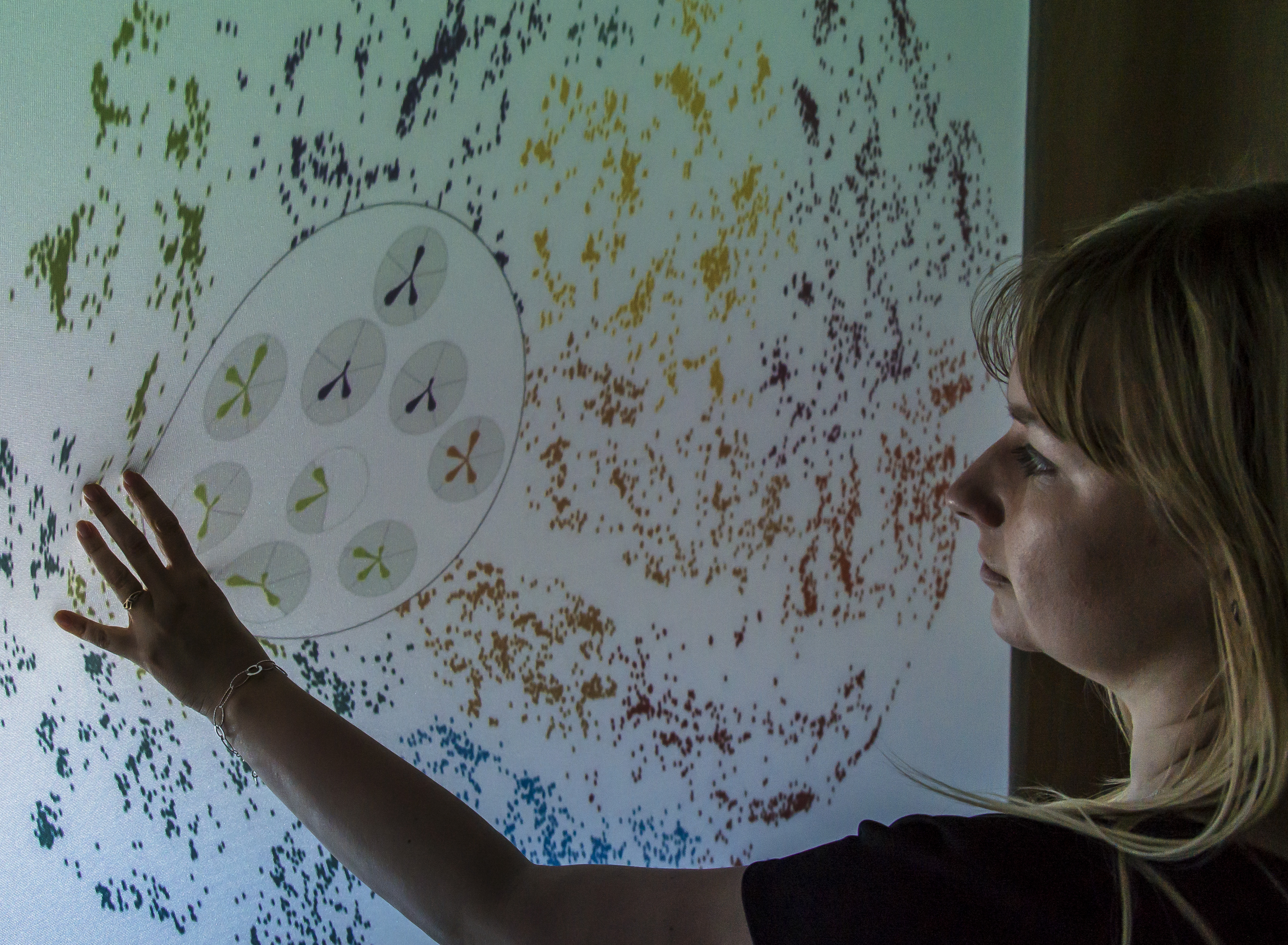Elastic Display
Elastic Displays are shape-changing interfaces that are only temporally deformable, more precisely, they automatically return into their initial flat state after the deformation. The display allows users to give input by force-touch (e.g. pinching, pushing, folding, and twisting the display), providing them with rich haptic feedback.
Most applications use rear-projection to display graphical content on the malleable surface, as it prevents users from covering the projection with their hand’s shadow while interacting. Nearly all feature the use of non-slippery, elastic fabric like for example latex, lycra and spandex. Detecting and tracking complex deformations and multi-touch on the deformable display are a remaining challenge. Recent prototypes often take advantage of the Intel RealSense or the Microsoft Kinect depth sensor to rapidly detect multi-touch input in three dimensions, offsetting the high cost and unreliability of other approaches like infrared camera-based tracking.
The large visualization and interaction space of elastic displays is appropriate for vast amounts of Zoomable 2D, Volumetric 2.5D and Spatial 3D data contained in modern information visualizations. Evaluation of existing elastic display applications revealed that interaction with the dimension of depth is especially suited to simulate physics of objects, retrace time-based changes or explore different levels of detail in the data. To make the content accessible Kammer et al. in New Impressions in Interaction Design: A Task Taxonomy for Elastic Displays propose techniques such as image sequences, pixel-based blending, vector fields and single- or multi-touch 3D. They state that elastic displays can support users to discover relationships, understand structures, search items, manipulate data, make decisions and collaborate. Additionally, Tangibles or Gravibles could be used to safe current state by retaining the shape of the surface.
Examples
The DepthTouch system was used to realize a product browser to search products by similarity and for interactive in-depth physics simulation. (see: DepthTouch: An Elastic Surface for Tangible Computing)
The FlexiWall system introduces different applications: a map viewer shows different semantic layers on geographical maps, a painting explorer allows analyzing the painting process through different radiological scans made of an art piece, and a photo browser allows local application of different image effects. Moreover, big data clustering algorithms can be investigated using either layers or a semantic zoom.

